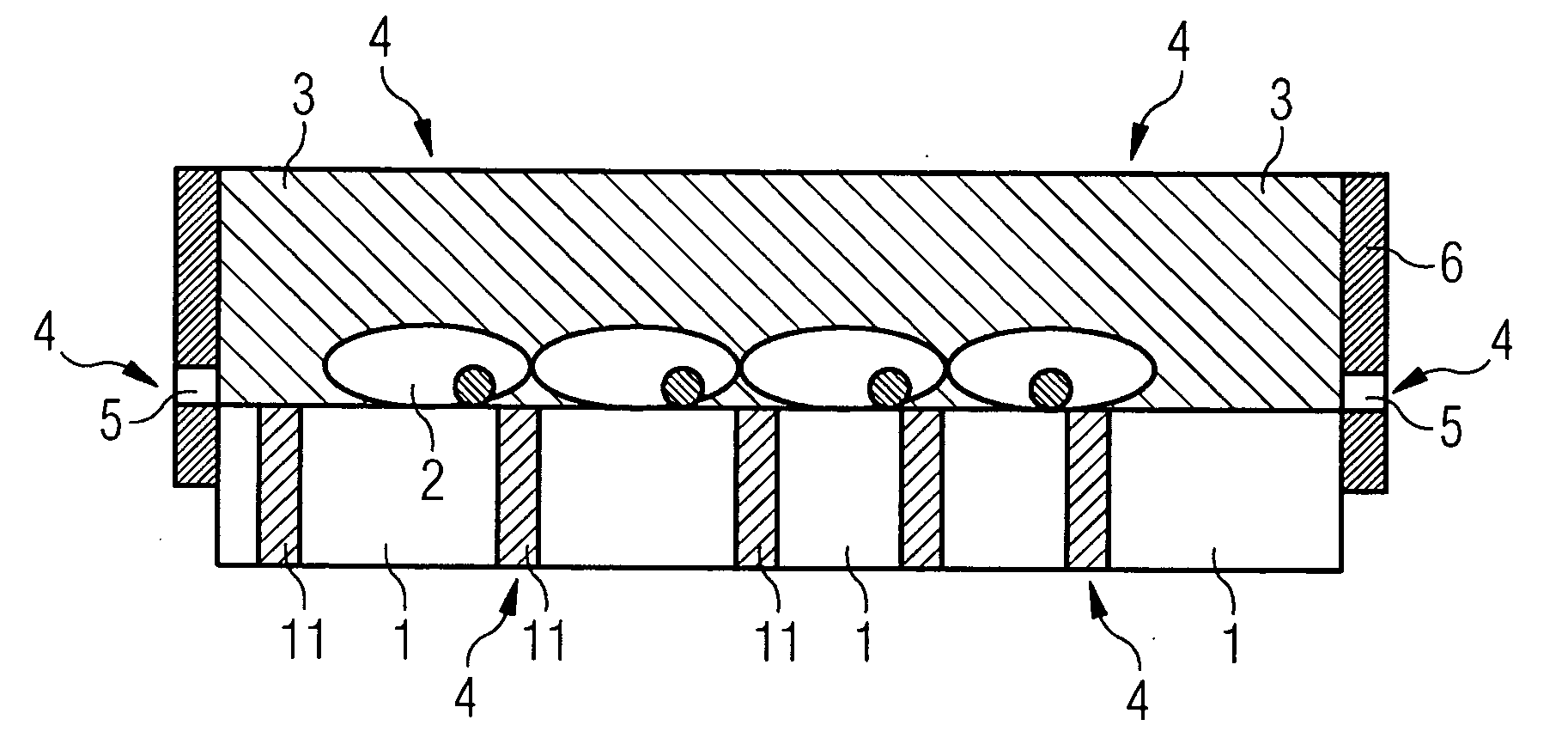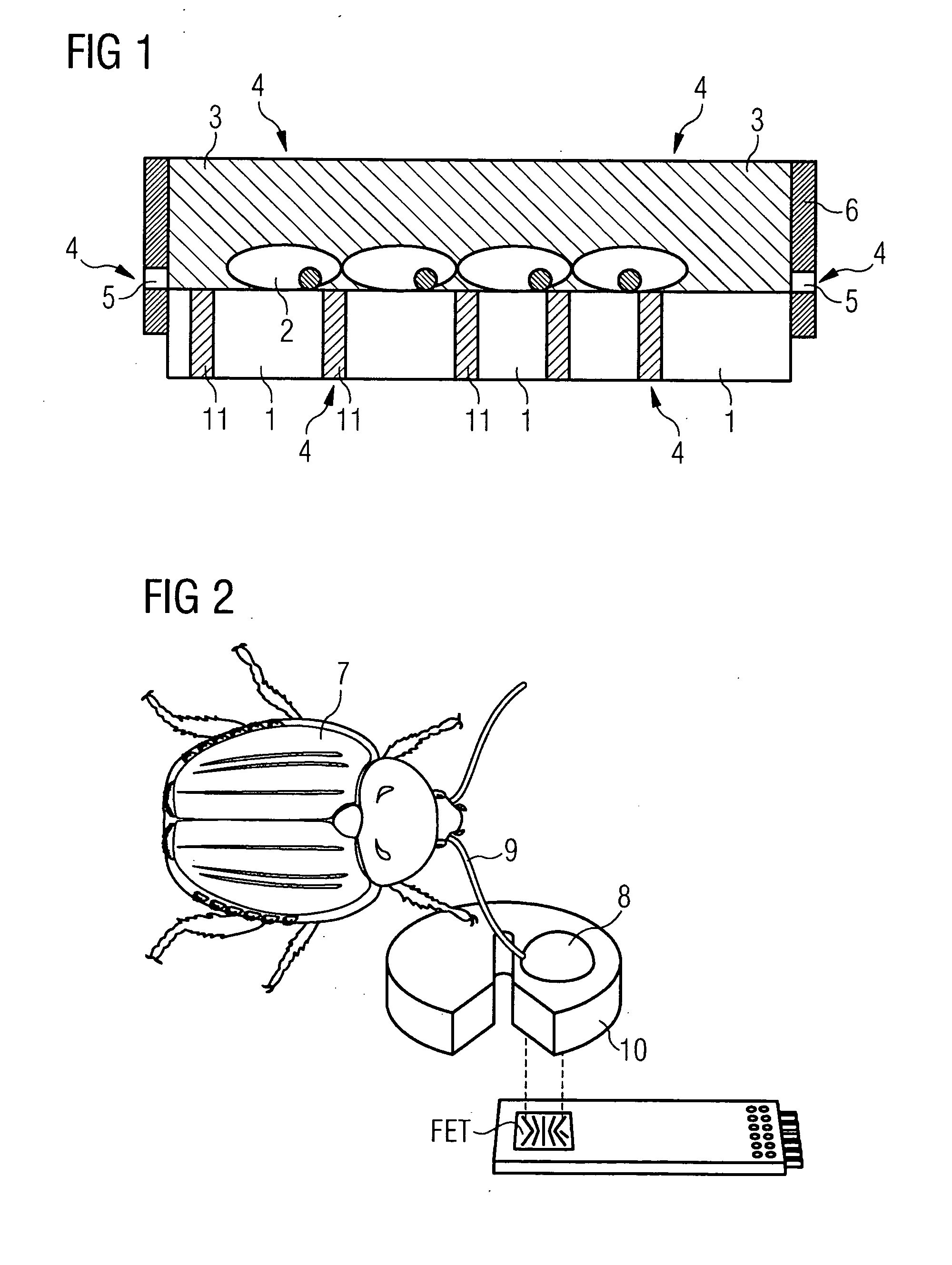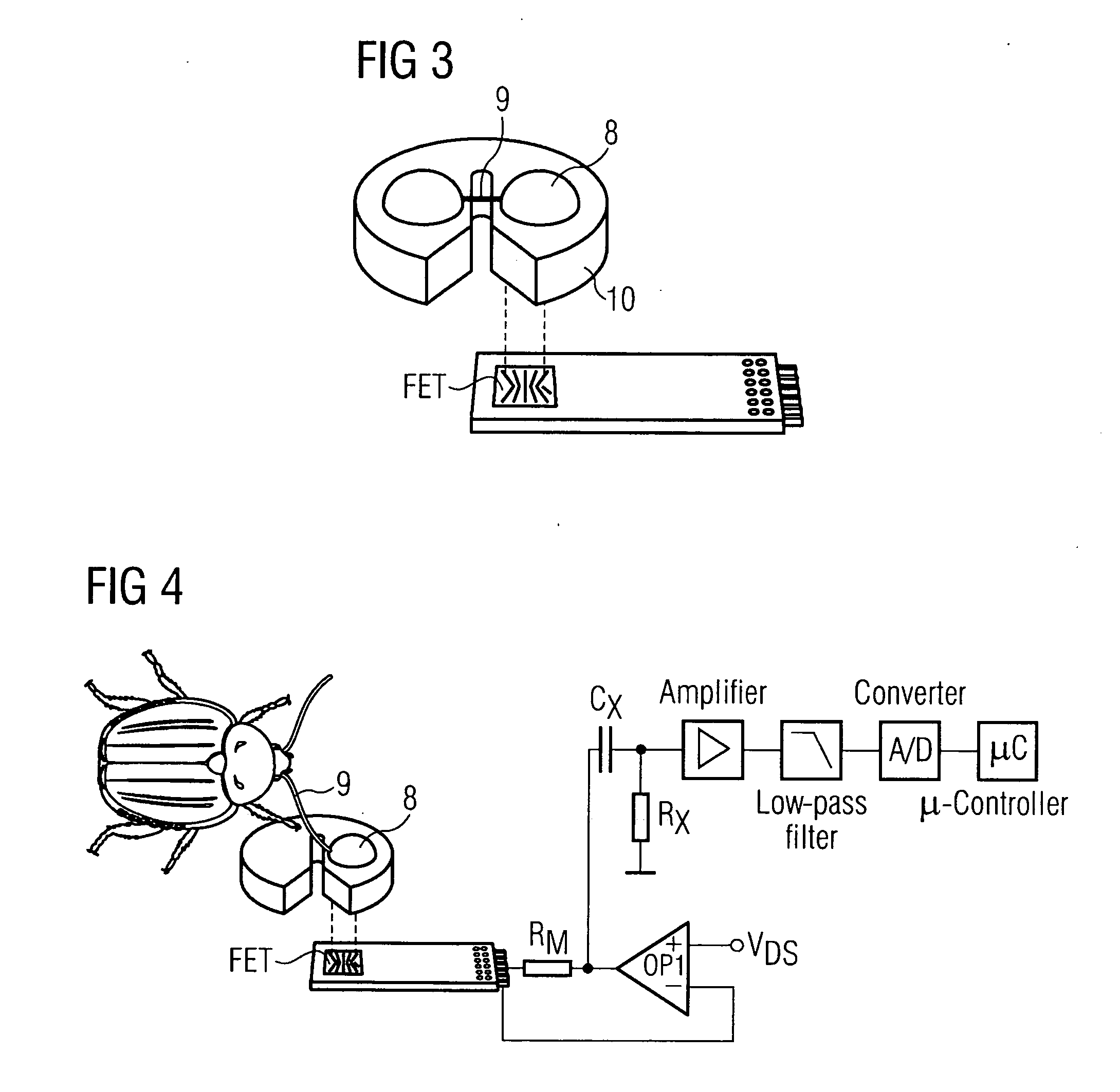Sesnsor for detecting a toxic or hazardous gas mixture and operating method
a technology of toxic or hazardous gas and detection method, which is applied in the direction of pollution detectors, instruments, biomass after-treatment, etc., can solve the problems of high construction cost, easy to be disturbed, and the approach to ascertaining and categorizing gases may perfectly meet its limits
- Summary
- Abstract
- Description
- Claims
- Application Information
AI Technical Summary
Benefits of technology
Problems solved by technology
Method used
Image
Examples
Embodiment Construction
[0054]Reference will now be made in detail to the preferred embodiments of the present invention, examples of which are illustrated in the accompanying drawings, wherein like reference numerals refer to like elements throughout.
[0055]The sensor system is operated together with an auto-calibration unit in order to set the zero point at regular time intervals on the monitoring sensors. The sensor comprises at least three separate but structurally identical sensor units exposed to ambient air / measurement gas and three separate but structurally identical units brought into contact with uncontaminated air. A unit that fails on account of a disturbance, such as e.g. contamination with foreign cells, can then be identified for plausibility reasons (two identical and one different reaction pattern).
[0056]The sensor system is equipped with new cell sensors at regular intervals, such as typically every 5-40 days.
[0057]The sensor system is constructed in such a way that the sensor chip can be ...
PUM
| Property | Measurement | Unit |
|---|---|---|
| distance | aaaaa | aaaaa |
| distance | aaaaa | aaaaa |
| diameter | aaaaa | aaaaa |
Abstract
Description
Claims
Application Information
 Login to View More
Login to View More - R&D
- Intellectual Property
- Life Sciences
- Materials
- Tech Scout
- Unparalleled Data Quality
- Higher Quality Content
- 60% Fewer Hallucinations
Browse by: Latest US Patents, China's latest patents, Technical Efficacy Thesaurus, Application Domain, Technology Topic, Popular Technical Reports.
© 2025 PatSnap. All rights reserved.Legal|Privacy policy|Modern Slavery Act Transparency Statement|Sitemap|About US| Contact US: help@patsnap.com



